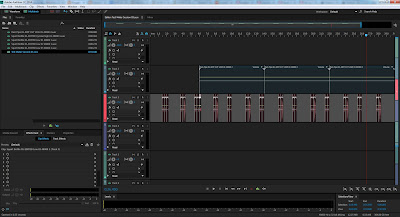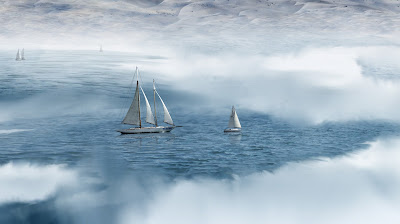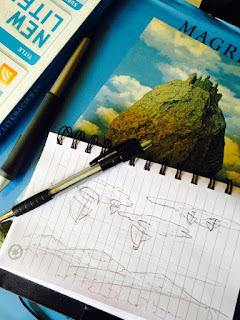Ed 2.0, Affinities, And Social Responsibility: A Response to Lankshear and Knobel Chapter 3
In chapter three of New Literacies: Everyday Practices and Social Learning Ed by Colin Lankshear and Michele Knobel the reader digs deep into the technologies and values that define ‘new literacies’ in detail. Lankshear & Knobel do not suggest that these ‘new literacies’ override convention but instead they transcend or build upon the social practices of previous eras (Lankshear & Knobel, 2011, p. 52). This is described on page fifty-three by use of a table to compare and contrast ‘modern’ and ‘postmodern’ variations between paradigms.
In many ways our lives have changed due to ‘new literacies’ and the postmodern era yet it seems educational practices and processes lags behind. Recognising the shift in paradigm makes it abundantly clear that if schools have not enabled their students to be engaged in the postmodern era then it’s time for a change.
In addition to what can be learnt or taught in school by being enabled with these new literacies, there is immense value in what can be created, learnt, and taught outside of school. Lankshear and Knobel describe Web 2.0 further by ‘affinities.’
Affinities are further described as various based on ‘ethos’ and 'configurations.' When the affinities and configurations take shape to form a community of interested and collaborative folks engaged in sharing information and learning, one can see great value and potential for student engagement beyond the confines of typical education (four walls and a ‘know-it-all’). In these affinity spaces students may engage other students with similar interests, or professionals who can impart their knowledge. What is learned is then shared with other students in a classroom or another affinity space, and so forth. Ultimately, creating and cultivating the conditions for education to thrive.
Illustrating the changes in paradigms in this manner makes it incredibly clear that when education reform is discussed, mainly, the argument for creativity and the arts, it should be relevant to some if not all of these dimensions in the ‘postmodern’ era. It is through my continued research and scholarship in the works of Ken Robinson, and his latest book, Creative Schools: The Grassroots Revolution That’s Transforming Education, that I found many similar points which will be compared to synthesize and further emphasise the importance of creative arts in education.
What really stuck out to me on the table was ‘multiple’ and ‘dispersed, modular.’ Lankshear and Knobel describe this as people operating under different identities or Discourses. These perspectives are shifting based on ‘life’ in the given moment. And the concept of a singular, linear life as one dwelling, or family, job, and social class or status is a thing of the past (Lankshear & Knobel, 2011, p. 53). Ken Robinson notes this when comparing people as products of the educational process under the industrial paradigm.
“The principle of linearity works well for manufacturing, it doesn’t for people.” (Robinson, Ken Ph.D. 2015, Ch. 2)
In addition to ‘paradigmatic,’ these new literacies in the ‘ontological’ sense have changed dramatically in the postmodern era with the growth of digital technologies and programming languages (Lankshear & Knobel, 2011, p. 55). These technologies have allowed many different types of people to have access to encoded texts and generate many possible meanings as never before seen. The sheer quantity and myriad of ways to communicate encoded meanings, such as Twitter, Facebook, Reddit, Youtube, LinkedIn, etc. has created many ways for people to create cultures and identities from the very broad to the very niche. Ultimately these technologies have created new ways which change social practices, such as a parent using Facebook to share their preschoolers drawing instead of hanging it on the fridge with magnets. (Lankshear & Knobel, 2011, p. 57, 58).
What is also important to note about these technological and digital ways for encoding and generating meanings, is that until recently, many of these platforms have not been readily accessible to people because the technology was too complex to engage the average person, unless they were interested in coding. Many great examples of these are listed on page sixty-four that show how recent technologies have enabled access to users by way of interface and simplification. (Lankshear & Knobel, 2011, p. 64). This enabling, essentially is how we can separate web 1.0 to 2.0. I can relate to this from my own accounts, such as, in the 90’s using IRC and AOL to access the internet and chat rooms with a dial up modem versus what is commonly done today, simply unlock your phone look at your Twitter and Facebook feeds. I can remember in the 90’s there was a nerd stigma associated with using the computer and the internet because of the various technological know-how required to even access social networks on the internet. I can remember the surge in web based professions and HTML and scripting languages. Now mostly, no one needs to know how to code because the major software platforms that people choose to utilize in web 2.0 do the coding for them.
It’s incredibly interesting that these ‘new literacies,’ which we are enabled to use in our everyday lives, has in many ways acted as a catalyst in education reform. Not only increasing the arguments for access to technology in schools, but also contributing to the argument for more access to arts disciplines as ways of being able to generate meaning in creative ways. One might call it ‘education 2.0’. At least that’s how I’m defining it by synthesis of “New Literacies” and “Creative Schools.” Where education 1.0 can be seen as the system designed and delivered in the industrial-modern era, ed 2.0 is taking shape now in response to societal demands placed upon schools to become more relevant in the postmodern technological age. Much like contemporary life that is complex and adapting, due to the age of technology and web 2.0, education must be. As Ken Robinson describes in “Creative Schools,” referring to the works of Dave Price’s “Open,”
“The growing availability and sophistication of digital technology is transforming both the world in which students learn, and the means by which they do it. Virtually every day, there are new tools for learning and creative work in all sorts of disciplines, and new programs and platforms that can help to customize education for every learner.” (Robinson, Ken Ph.D. 2015, Ch. 3)
“These are affinities where their participation and collaboration enact relationships to/with others and their shared interests, and contribute collectively to building the affinity and a sense of membership in that affinity.” (Lankshear & Knobel, 2011, p. 80).
As I begin to think more deeply about these kinds of 'new literacies,' and affinities, and the immense complexities involved with these social arrangements, I am starting to wonder, for young learners in particular, what is acceptable? With regard and concern for young learners, these affinity spaces and talking to strangers on the internet can potentially lead them to harm. Furthermore, how can young learners be guided to associate themselves to socially acceptable, ethical, and moral affinities? As our society faces, yet another tragedy due to racism and gun violence, in Charleston, SC, I am really starting to wonder. How did the young killer decide to align himself with affinities on the internet related to white supremacy? Was this part of his learned culture from his family? Was this something learnt on his own and on the internet? As I learn about ‘open’ and ‘free’ internet, I am beginning to see the need for more emphasis on ethics and morality. Although I do not think this is discussed in great detail in “New Literacies,” I believe there should be a chapter on 'new literacies' and social responsibility.
Aronica, Lou; Robinson, Ken Ph.D. Creative Schools the Grassroots Revolution That’s Transforming Education. 2015. Narr. Robinson, Ken Ph.D. Tantor Media. May 8, 2015. Accessed June 20, 2015. Digital File.
Citations
New Literacies: Everyday Practices and Social Learning Third Ed by Colin Lankshear and Michele Knobel. McGraw-Hill Education 2011.













